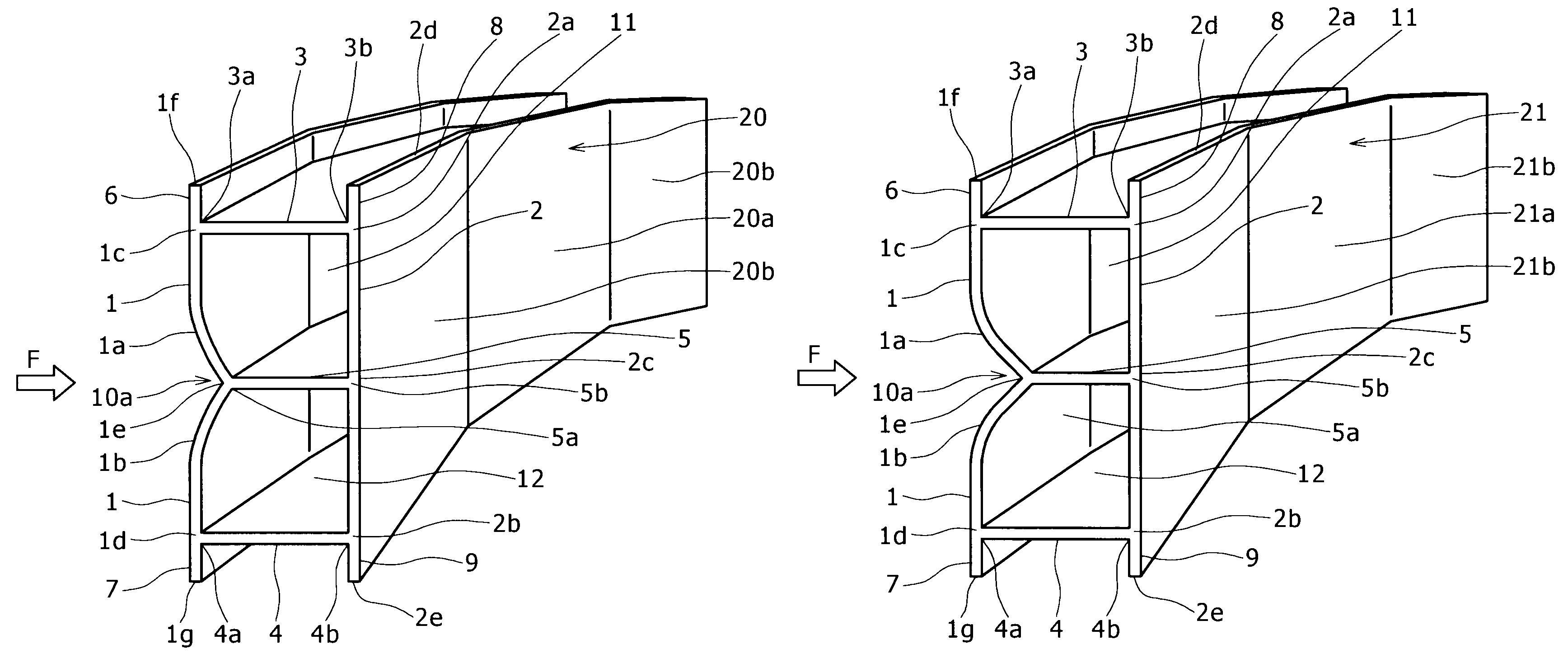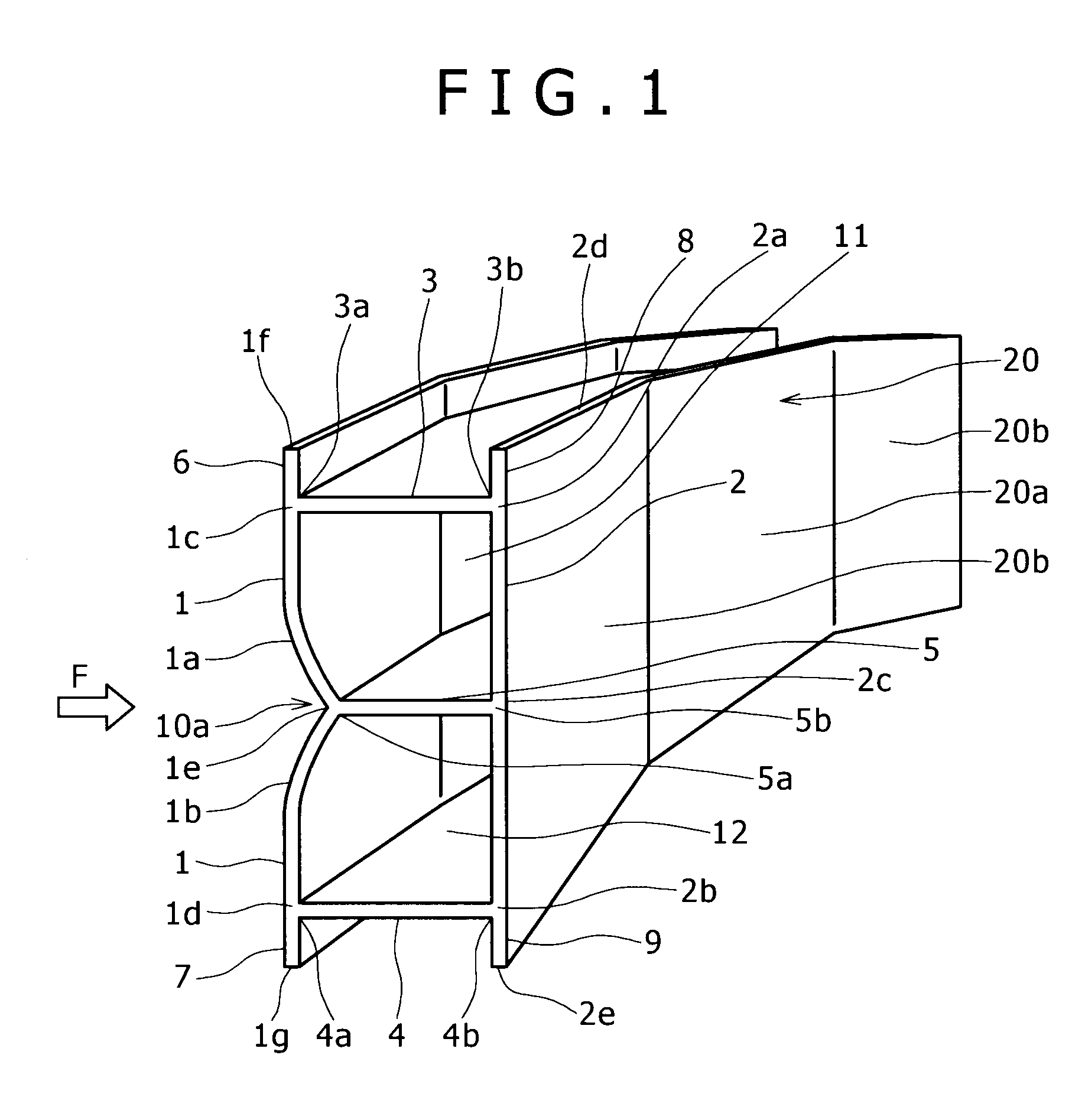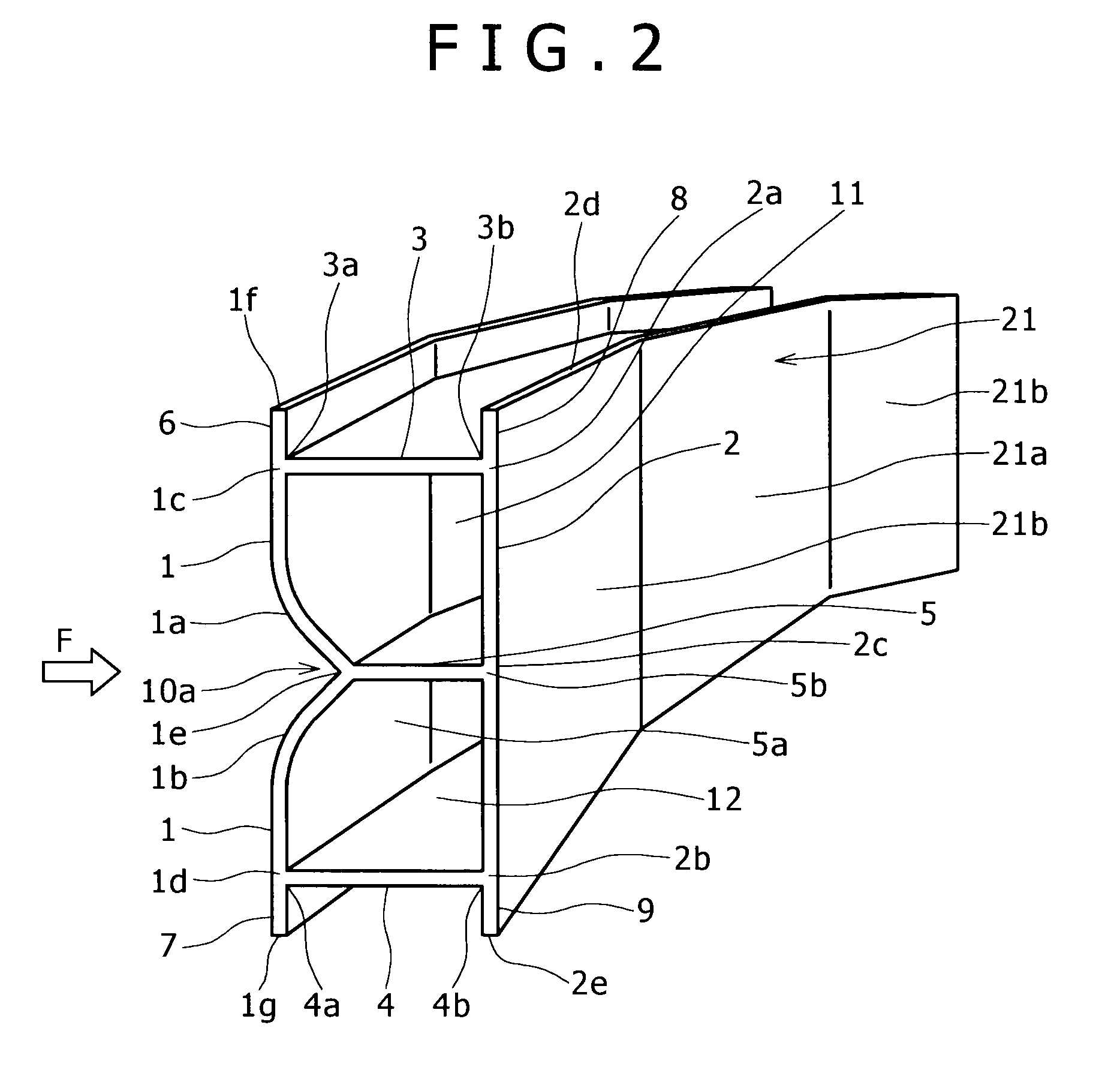Automobile body reinforcement with excellent bending crush characteristics
a technology of automobile body reinforcement and crush characteristics, which is applied in the direction of bumpers, vehicle components, vehicular safety arrangments, etc., can solve the problems of increasing the amount of energy absorption per unit deformation of the automobile body reinforcement, the automobile body reinforcement is not easily buckled or bent, and the damage to the automobile body decreases, so as to improve the crush strength of the front wall, improve the bending strength and energy absorption. , the effect of increasing the width-thickness ratio
- Summary
- Abstract
- Description
- Claims
- Application Information
AI Technical Summary
Benefits of technology
Problems solved by technology
Method used
Image
Examples
embodiments
[0066]Experiments were carried out to evaluate, in terms of pole collision strength, the example bumper reinforcements shown in FIGS. 1 and 2 of the present invention and the example bumper reinforcement shown, for comparison purposes, in FIG. 6.
[0067]For the experiments, a pole collision was simulated as follows. A bumper reinforcement collides, at a front middle portion thereof, with a rigid pole with a radius of 127 mm. Based on the simulation, the initial buckling load applied to a local area of the front middle portion, the load energy absorption performance of the bumper reinforcement, and the bending moment generated in the bumper reinforcement were analyzed. Even though the vehicle was assumed to weigh 1.0 to 1.8 tons and collide with a pole at a speed of 8 to 64 km / h, the analysis was made based on static compression experiments.
[0068]As for the cross-sectional shape, with reference to FIG. 3, each bumper reinforcement was assumed to have a front wall vertical width Wa of 4...
PUM
 Login to View More
Login to View More Abstract
Description
Claims
Application Information
 Login to View More
Login to View More - R&D
- Intellectual Property
- Life Sciences
- Materials
- Tech Scout
- Unparalleled Data Quality
- Higher Quality Content
- 60% Fewer Hallucinations
Browse by: Latest US Patents, China's latest patents, Technical Efficacy Thesaurus, Application Domain, Technology Topic, Popular Technical Reports.
© 2025 PatSnap. All rights reserved.Legal|Privacy policy|Modern Slavery Act Transparency Statement|Sitemap|About US| Contact US: help@patsnap.com



